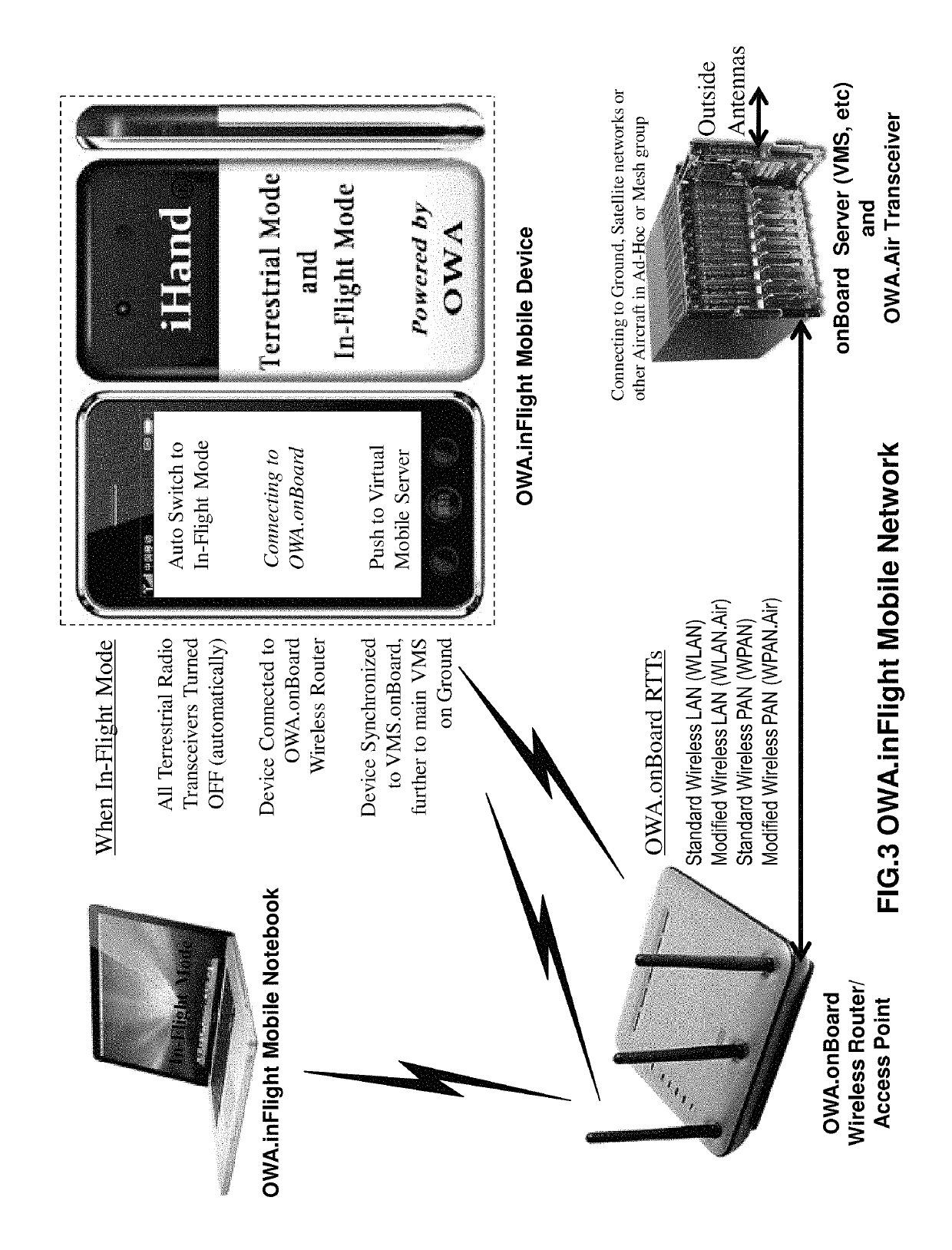Open wireless architecture (OWA) unified airborne and terrestrial communications architecture
a wireless and airborne communication technology, applied in the field of open wireless architecture (owa) unified airborne and terrestrial communications architecture, to achieve the effect of improving the current wireless transmission and system architecture, improving the transmission performance, and being open and simpl
- Summary
- Abstract
- Description
- Claims
- Application Information
AI Technical Summary
Benefits of technology
Problems solved by technology
Method used
Image
Examples
Embodiment Construction
[0099]The present inventions now will be described more fully hereinafter with reference to the accompanying drawings, in which some examples of the embodiments of the inventions are shown. Indeed, these inventions may be embodied in many different forms and should not be construed as limited to the embodiments set forth herein; rather, these embodiments are provided by way of example so that this disclosure will satisfy applicable legal requirements. Like numbers refer to like elements throughout.
[0100]The present invention relates to an Open Wireless Architecture (OWA) unified airborne and terrestrial communication networks providing optimal high-speed connections with open radio transmission technologies (RTTs) between aircrafts and ground cells, and between different aircrafts in Ad-Hoc or Mesh group, to construct the multi-dimensional unified information delivery platform across the airborne networks and the terrestrial networks wherein the same OWA mobile device or OWA mobile ...
PUM
 Login to View More
Login to View More Abstract
Description
Claims
Application Information
 Login to View More
Login to View More - R&D
- Intellectual Property
- Life Sciences
- Materials
- Tech Scout
- Unparalleled Data Quality
- Higher Quality Content
- 60% Fewer Hallucinations
Browse by: Latest US Patents, China's latest patents, Technical Efficacy Thesaurus, Application Domain, Technology Topic, Popular Technical Reports.
© 2025 PatSnap. All rights reserved.Legal|Privacy policy|Modern Slavery Act Transparency Statement|Sitemap|About US| Contact US: help@patsnap.com



